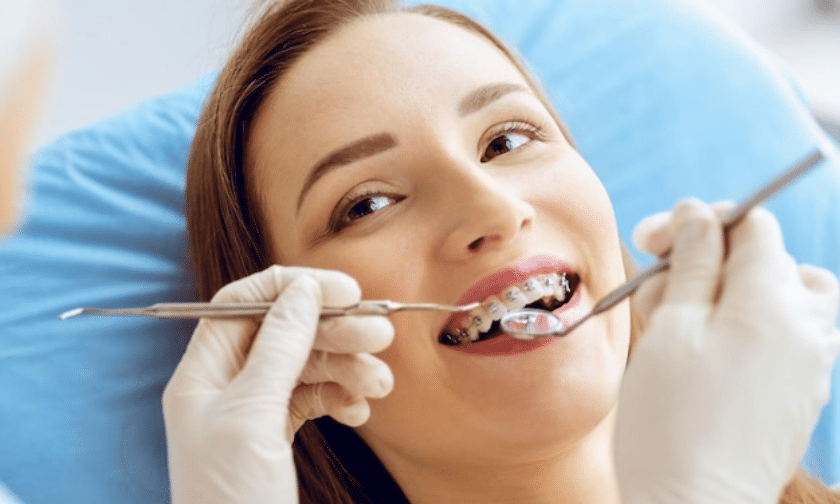Some Ideas on Legacy Orthodontics You Should Know
Table of ContentsThe Of Legacy OrthodonticsWhat Does Legacy Orthodontics Do?Some Of Legacy OrthodonticsSome Known Factual Statements About Legacy Orthodontics 9 Simple Techniques For Legacy Orthodontics
In addition, we offer flexible treatment schedules, versatile settlement choices and an enjoyable, satisfying experience.An orthodontist is a dental expert educated to detect, avoid, and deal with teeth and jaw irregularities. Orthodontists function with individuals of all ages, from kids to grownups.
Malocclusion, or misaligned teeth, can lead to oral problems, consisting of tooth degeneration, periodontal disease, and challenging or painful chewing. Not everybody is birthed with straight teeth. If you have a bad bite or large areas in between your teeth, you might intend to get in touch with a dentist concentrating on orthodontic treatment.
8 Easy Facts About Legacy Orthodontics Explained
( Photo Credit Score: DigitalVision/Getty Images) Orthodontists use repaired and detachable dental gadgets, like braces, retainers, and bands, to transform the placement of teeth in your mouth. Orthodontic treatment is for oral problems, including: Misaligned teethBite problems, like an overbite or an underbiteCrowded teeth or teeth that are too much apartJaw misalignmentThe goal of orthodontic treatment is to boost your bite.
A healthy bite ensures you can eat, eat, and talk appropriately. While you could consider orthodontists as mainly for kids or teenagers who require braces, they can correct dental problems at any kind of age. Orthodontists go to college, dental school, and orthodontic college. After graduation, they invest 2 or 3 years in an orthodontic residency program.
, but not all dental professionals are orthodontists. They concentrate on two areas: Exactly how to effectively and safely move teeth Exactly how to appropriately direct advancement in the teeth, jaw, and faceOnce an orthodontist has actually finished training, they have the option to become board accredited.
The 7-Minute Rule for Legacy Orthodontics
Imbalance, or malocclusion, is one of the most common factor people see an orthodontist. It is genetic and is the result of dimension distinctions in between the upper and lower jaw or between the jaw and teeth. Malocclusion causes tooth overcrowding, an irregular jaw, or uneven bite patterns. Malocclusion is normally treated with: Your orthodontist connects steel, ceramic, or plastic square bonds to your teeth.
If you have just minor malocclusion, you might have the ability to utilize clear braces, called aligners, rather than conventional braces (https://www.openstreetmap.org/user/legacyortho). Some people require a headwear to help relocate teeth right into line with pressure from outside the mouth. After dental braces or aligners, you'll require to put on a retainer. A retainer is a custom-made gadget that maintains your teeth in location.
They're frequently made use of on kids. They can produce added area in the mouth without having to pull teeth. If you have a significant underbite or overbite, you could require orthognathic surgical treatment (additionally called orthodontic surgical treatment) to extend or reduce your jaw. Orthodontists utilize cables, surgical screws, or plates to support your jaw bone.
You may need to see an orthodontist if you have: Crowding or not adequate room for every one of your teethOverbite, when your top teeth come by your bottom teethUnderbite, when your bottom teeth are too far forwardSpacing or problems with gapsCrossbite, which is when your upper teeth fit behind your base teeth when your mouth is closedOpen bite or an upright gap between your front bottom and top teethMisplaced midline, when the center of your bottom and top teeth do not align Correcting an oral malocclusion can: Make attacking, eating, and speaking easierImprove the balance of our face and your overall appearanceEase pain from temporomandibular joint conditionsDifferent your teeth and make them much easier to clean, assisting prevent tooth degeneration or tooth cavities It's frequently a dental professional that first notifications misaligned teeth during a routine test.
The Best Strategy To Use For Legacy Orthodontics

Throughout your very first orthodontic consultation, you'll likely have: An oral examPhotos taken of your face and smileDental X-raysPanoramic (360 degree) X-rays of your face and headImpressions to produce clear braces molds of your teethThese tests will certainly aid your orthodontist understand exactly how to wage your treatment. leesburg orthodontist. An orthodontist is a dental practitioner that's had training to treat your teeth and jaw
An orthodontist is focused on your bite, so something like a cracked tooth would be dealt with by a dentist. Orthodontists are concentrated on your bite, or the method your teeth fit together, and the straightness of your teeth.
Ever questioned exactly how celebrities constantly appear to have completely straightened teeth? Orthodontists are oral experts who concentrate on correcting abnormalities in the teeth and jaws.
The Ultimate Guide To Legacy Orthodontics

, orthodontists have a diverse toolkit at their disposal. These tried-and-true braces use a system of brackets adhered to the teeth and linked by cables.
These detachable trays are personalized to gradually change the teeth's setting. In instances of narrow jaws, palatal expanders can be made use of to develop area for proper tooth positioning.